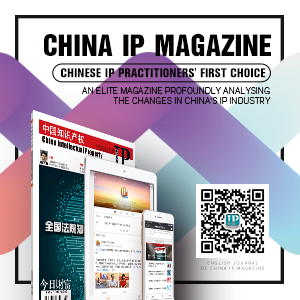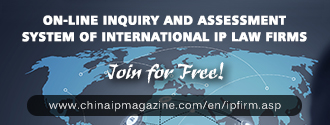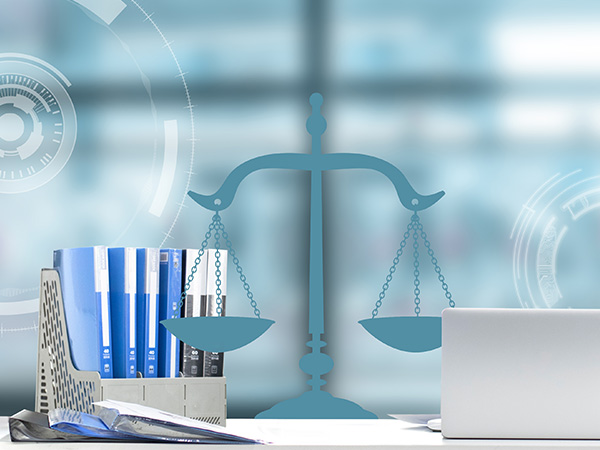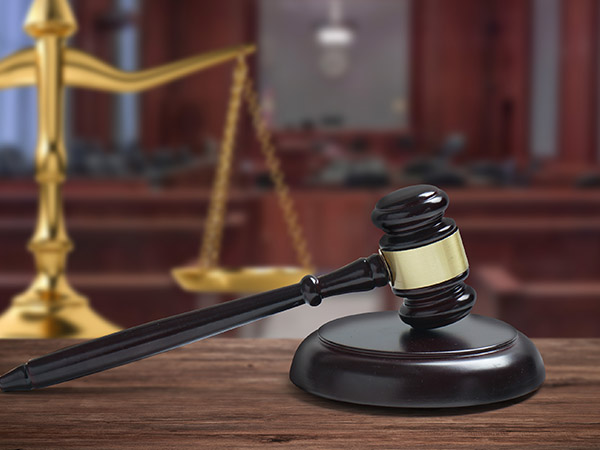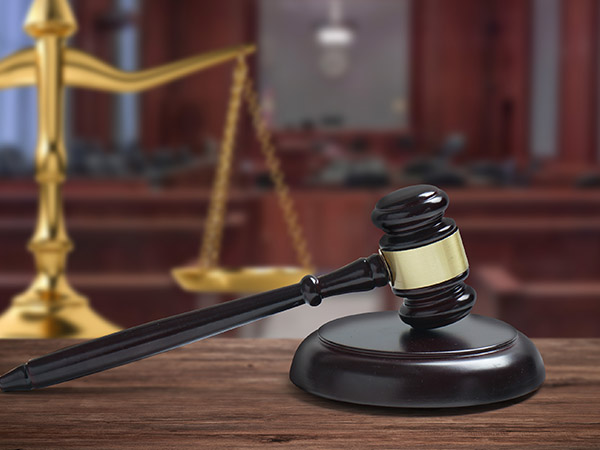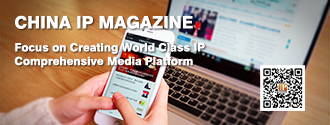2. Application of “judicial hierarchical analysis method” to determine the amount of statutory compensation
Case 2: Siemens v. “SIEMIVES” trademark infringement case ((2016) Zhejiang MinZhong No.699)
The Higher People’ s Court of Zhejiang Province (Zhejiang Higher Court) first applied the “judicial hierarchical analysis method” to determine the amount of statutory compensation for intellectual property rights and thus to decide whether the amount o f compensation o f 130,000 Yuan determined in the original judgment was reasonable. Although this method is proposed in a trademark infringement case, it can also be used to guide the trial of patent infringement cases.
Intellectual property infringement essentially causes damage to the market value of the right which depends on the owner and objective matter of the right. The infringing party and the infringing act are the direct cause of the damage. Therefore, the determination of the amount of damage should not only accurately reflect the market value of the infringed intellectual property right, but also take full account of various factors of the infringing party and the infringing act in the market environment.
Zhejiang Higher Court holds that, in determining the amount of s t a t u t o r y compensation , considerations and hierarchical ranges shall be reasonably set in light of the legislation spirit and the law. The information of the right (including the owner and objective matter of the right) and the information of the infringement (including aspects of the infringing act and the infringing party) shall be analyzed and assessed respectively and thoroughly. The hierarchy of the information of the right and the information of the infringement can be evaluated comprehensively and adaptively, so as to get to a reasonable amount of statutory compensation by regulated discretion and improve the legitimacy, normativity and predictability of the amount of statutory compensation.
Specifically, Zhejiang Higher Court determines the amount of statutory compensation based on comprehensive consideration of such factors as the owner and objective matter of the right and aspects of the infringing act and the infringing party.
The court considers that the information of the right is a more significant factor for determination of the amount of statutory compensation while the information of the infringement is also significant, and the amount of statutory compensation can be determined from a higher range of the statutory compensation amount prescribed by Article 63 of the China is Trademark Law. The amount of compensation determined by the original judgment is not adaptive to the market value of the trademark and name of the Siemens company, and is too low for the right holder to get sufficient judicial remedy. In addition, if the amount of compensation is too low, it is not sufficient to punish the infringers and prevent infringers from counterfeiting famous trademarks. In summary, Zhejiang Higher Court considers that the amount of compensation of 130,000 Yuan is unreasonable, and orders an amount of statutory compensation of 1 million Yuan. In addition, Zhejiang Higher Court upholds the reasonable expenses of 70,000 Yuan for Siemens to stop the infringement.
Determination of the amount of statutory compensation based on comprehensive consideration of the value of the patent and the estimated profit margins
Case 3: Huawei V. Samsung patent infringement case ((2016) Min05MinChu No. 725)
Plaintiff Huawei Terminal Co., Ltd. (Huawei) sued Samsung (China) Investment Co., Ltd. and other four defendants for infringement of its patent ZL201010104157.0, entitled “processing method and user apparatus for terminal component display, and claimed for damages of 80 million Yuan and reasonable expenses of 500,000 Yuan jointly and severally from Samsung (China) Investment Co., Ltd. , Huizhou Samsung Electronics Co., Ltd. and Tianjin Samsung Communication T e c h n o l o g y Co., Ltd ( three defendants)”.
The Intermediate People’s Court of Quanzhou, Fujian (Quanzhou Intermediate People’s Court) held a hearing and concluded that the three defendants had joint liability. Because both the plaintiff and the defendants failed to prove the actual loss of the patentee or the profit of the infringers for infringement of the patent, in this case, the damage award was determined on the basis of statutory compensation.
In consideration of the will fullness of infringement, the value of the patent involved, the estimated profit range of the infringing products, Quanzhou Intermediate People ’ s Court did not simply adopt the upper limit of statutory compensation when calculating the amount of compensation, but awarded an amount above the upper limit, which was claimed by the plaintiff.
More specifically, first, for calculation of the amount of compensation, Huawei h a d submitted a notarized IDC data to support the number of sales of mobile terminals , but the IDC data is only the number of allegedly infringing products sold by the defendants in China, excluding the sales of the allegedly infringing products manufactured in China but sold abroad which belong to confidential information that is difficult for others to get to know other than the three defendants.
Quanzhou Intermediate People’s Court had repeatedly asked the three defendants to provide the sales data and profit margins, but the three defendants delayed or refused to provide. Therefore, the Quanzhou Intermediate People’s Court, in accordance with the provisions of Article 27 of the Interpretation (II), considered that the three defendants shall bear the adverse consequences of the burden of proof, and, when calculating the number of the mobile terminal involved in the production and sale of the three defendant s , it was determined based on the data that Huawei provided, including the number of 31,422,259 units and the amount of sales of USD 12.7172724109 billion, and could fluctuate appropriately.
Second, according to the notarized report “Samsung Electronics Co., Ltd. 2015 earnings” which disclosed the sales profit margin of 13.2% and the report of the Ministry of Industry in 2014 submitted by the three defendants in connection with domestic mobile phone survey data which showed the average profit margin of 3.2% in the industry, Quanzhou Intermediate People ’ s Court concluded that the defendant’s profit margin was roughly between 2.6451926614672 billion Yuan to 10.911419728552 billion Yuan. Obviously, the profit margin substantially exceeded the upper limit of statutory compensation, and thus Quanzhou Intermediate People’s Court considered that the damage should be awarded for discretion without being limited by that upper limit.
Moreover, Quan zhou Intermediate People ’ s Court studied the value of the patent involved and its contribution to the alleged infringing products.
Although the allegedly infringing mobile terminal involved a number of patented technologies, the graphical user interface made substantial contribution to the profitability of the smart mobile terminal product. The patent is a core and infrastructural patent relating to graphical user interface of intelligent mobile terminal, which contributes a lot to the intelligent operation of the mobile terminal. In addition, the three defendants were one of the top three global smart mobile terminal manufacturers, but had chosen to use the patent in numerous versions of intelligent mobile terminal products, although the patent is not a standard essential patent. This showed the patent has an extremely high market value.
Finally, Quanzhou Intermediate People ’s Court held that the patent was highly creative and was essential for intelligent mobile terminals. The three defendants had willfulness of joint infringement, and had got huge sales and profits from the sale of a huge number of allegedly infringing products of different versions for a long time, and thus the damage should be awarded above the upper limit of statutory compensation.
Summary
It can be seen from the above cases that the courts tend to strengthen protection of the right of patentee under latest judicial practice. In order to get desirable damage award that is comparable to the value of the patent in patent infringement litigation, the patentee shall make efforts to carefully do investigation work and collect sufficient evidences of damage before initiating a lawsuit, rather than simply claim statutory compensation. The relevance and testimony of evidences shall also be confirmed and all evidences shall be submitted in time. In particular, with respect to infringement damage, the patentee should pay attention to the following points:
1. In the case where the data or documents relevant to patent infringement are possessed by the infringer, the patentee should actively submit preliminary evidences to prove the profits of the infringer. The patentee may apply for evidence preservation and try to transfer the burden of proof to the infringer. The infringer’s website, promotional materials, statement of scope of business, sales scale, profits, statistical data from industry or specialized agencies, profit analysis, etc. can all be used as a preliminary evidence.
2. Attention should be paid to evidences which may reflect the market value of the patent, such as rewards or prizes that the patented technology has got, the impact of the patent on the sale of allegedly infringing products and use of the patent in the industry.
3. The patentee may collect evidences that can prove that there are kinds of infringing products, the amount of sale is very huge, and the infringer continues to manufacture/sell the infringing product , in order to obtain increased damage award.
4. If the amount of infringement compensation is determined with reference to the patent royalties, the nature, scope, time and other aspects of the license contract are used to check whether such a contract shall be referred to, an invoice may be used for confirmation, and the relationship between the license fee itself and the patent involved may also be considered.
5. The reasonable cost of litigation can include cost for purchase of allegedly infringing product, product testing fee, identification fee, notary fee, translation fee, lawyer fees, etc. Evidences can be submitted for proving such costs.
1 Article 65 of the Patent Law: "The amount of compensation for patent right infringement shall be determined according to the patentee's actual losses caused by the infringement. If it is hard to determine the
actual losses, the amount of compensation may be determined according to the benefits acquired by the infringer through the infringement. If it is hard to determine the losses of the patentee or the benefits
acquired by the infringer, the amount of compensation may be determined according to the reasonably multiplied amount of the royalties of that patent. The amount of compensation shall include the reasonable
expenses paid by the patentee for putting an end to the infringement.
If the losses of the patentee, benefits of the infringer, or royalties of the patent are all hard to determine, the people's court may, on the basis of the factors such as the type of patent right, nature of the
infringement, and seriousness of the case, determine the amount of compensation within the range from 10,000 Yuan to 1,000,000 Yuan".
2 The second amendment was made on January 19, 2015, which came into effect on February 1, 2015 (Act [2015] No. 4).
3 Article 20 states that the actual loss suffered by the right holder under Article 65 of the Patent Law may be determined by multiplying the total number of sales reduction caused by the infringement by the
reasonable amount of each patented product. The actual loss suffered by the right person due to the infringement may be considered as the total number of sales of the infringing products multiplied by the
reasonable profits of each patented product if the total number of sales reduction cannot be determined.
The benefit of the infringer for infringement under Article 65 of the Patent Law may be calculated on the basis of the total amount of the sale of the infringing product in the market multiplied by the reasonable
profit of each infringing product. The interests of the infringer due to infringement is generally calculated in accordance with the operating profit of the infringe.



